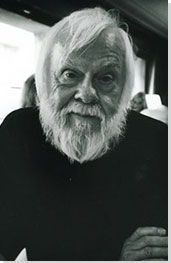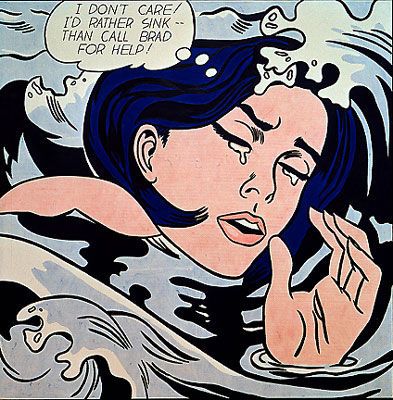Summary of John Baldessari
John Baldessari is renowned as a leading Californian Conceptual artist. Painting was important to his early work: when he emerged, in the early 1960s, he was working in a gestural style. But by the end of the decade he had begun to introduce text and pre-existing images, often doing so to create riddles that highlighted some of the unspoken assumptions of contemporary painting - as he once said, "I think when I'm doing art, I'm questioning how to do it." And in the 1970s he abandoned painting altogether and made in a diverse range of media, though his interests generally centered on the photographic image. Conceptual art has shaped his interest in exploring how photographic images communicate, yet his work has little of the austerity usually associated with that style; instead he works with light humor, and with materials and motifs that also reflect the influence of Pop art. Baldessari has also been a famously influential teacher. His ideas, and his relaxed and innovative approach to teaching, have made an important impact on many, most notably the so-called Pictures Generation, whose blend of Pop and Conceptual art was prominent in the 1980s.
Accomplishments
- Baldessari first began to move away from gestural painting when he started to work with materials from billboard posters. It prompted him to analyze how these very popular, public means of communication functioned, and it could be argued that his work ever since has done the same. He invariably works with pre-existing images, often arranging them in such a way as to suggest a narrative, yet the various means he employs to distort them - from cropping the images, to collaging them with unrelated images, to blocking out faces and objects with colored dots - all force us to ask how and what the image is communicating.
- A crucial development in Baldessari's work was the introduction of text to his paintings. It marked, for him, the realization that images and texts behave in similar ways - both using codes to convey their messages. Text began to disappear from his work in the early 1970s, and since then he has generally relied on collage, but his work has continued to operate with the same understanding of the coded character of images. Typically, he collages together apparently unrelated categories of image or motif, yet the result is to force us to recognize that those images often communicate similar messages.
- On a visit to the Metropolitan Museum in New York in 1965, Baldessari was struck by the use of unpainted plaster to fill in missing shards of Greek vases. This prompted his interest in how images are effected by having portions removed or blotted out, and he has continued to explore this ever since. Often, the result of his alterations to photographs is to render them generic, suggesting to us that rather than capturing a special moment, or unusual event, photographs often communicate very standardized messages.
Important Art by John Baldessari
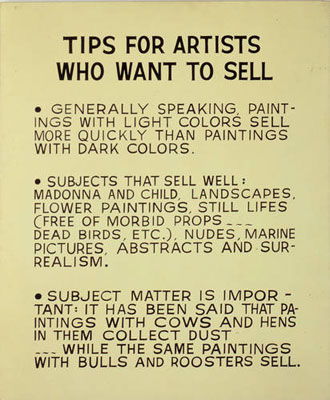
Tips For Artists Who Want To Sell
While teaching at a night school in the University of California, Baldessari came upon a sheet left in a classroom that dispensed advice to artists. It led to a number of works, of which Tips For Artists Who Want To Sell is an important example. Tips is one of his breakthrough works: it abandons familiar imagery, adopts language as its vehicle, and slyly suggests that behind some supposedly great art may be merely a series of cynical ploys. In 1970, Baldessari burned many of his early paintings as part of a work titled Cremation Project, but he saved works such as these, done after 1966, in which he offered satirical checklists of what to include in a painting if it is to sell. A clear stab at the art market, he uses humor to poke fun at the absurdity of traditional art and "how-to" art instruction manuals. Its comedy also derives from the contrast of his simple advice with the grandeur of the Abstract Expressionist painting that had recently dominated the American art market.
Acrylic on canvas. © John Baldessari - The Broad Art Foundation, Santa Monica
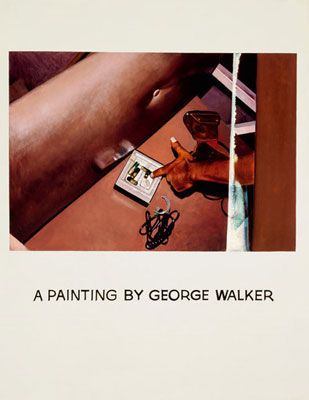
Commissioned Painting: A Painting by George Walker
The hard-edge painter Al Held is reported to have said that "Conceptual art is just pointing at things." Taking this accusation literally, Baldessari decided to create a series of Commissioned Painting, hiring sign painters to paint photorealistic images of a hand pointing to an object. The act of pointing demands the viewer's attention to be directed to a specific area, but the genius of the piece lies in the questions it leaves us with: why should we look here, and not elsewhere? Do images always direct us to one, and only one message? Although this painting includes the caption "A Painting By George Walker," we also understand that the idea was Baldessari's, hence we are led to questioning the nature of artistic authorship. He has said of this series, "The point was to organize these [sign painters] in a different context and provide them with an unhackneyed subject that would attract the attention of a viewer interested in modern art." He has said that working on the project felt like being a choreographer.
Oil and acrylic on canvas. © John Baldessari - Marian Goodman Gallery
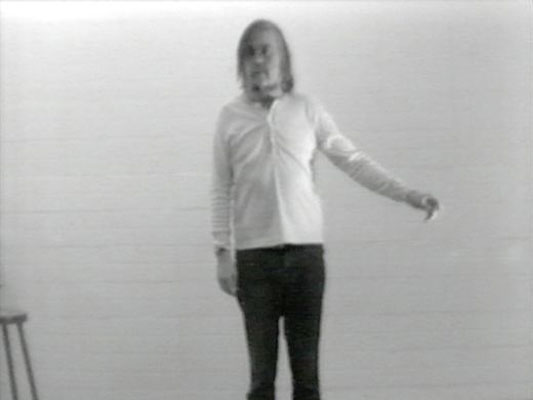
I Am Making Art
In this video piece, Baldessari makes several arm movements, reciting the phrase, "I am making art," after each gesture. Baldessari has always been conscious of the power of choice in artistic practice - like choosing to paint something red rather than blue, for example. Here, he carefully associates the choice of arm movements with the artistic choices that a painter or sculptor may make, concluding that choice is a form of art in itself. But he also confronts one of the fascinating problems that unpinned the work of many early Conceptual artists: how much can art be reduced and simplified before it stops being art at all? Baldessari offers no definitive answer, but he suggests that the gap between art and the ordinary, between art and life, may be imperceptible.
Performance video. © John Baldessari

Frames and Ribbon
In the piece Frames and Ribbons, Baldessari incorporates flat, geometric shapes of color to change the meaning of appropriated images. The imagery focuses on a work place achievement, such as an opening ceremony or the successful completion of a project. Baldessari believed that such celebrations were arbitrary, so he blocked out the facial expressions of the figures, as well as much of the other detail that would particularize the events, and mocked its absurdity, its character as banal ritual. The circles over the characters faces may throw our attention on to the event, but what we come to realize as a result is that this event is like so many others. The photograph that commemorates the event is also a social ritual, and a ritual that is designed to deliver up only certain sorts of messages. Although the picture has these insights at its heart, it also has a strange, sad absurdity that is reminiscent of René Magritte's pictures of faceless, bowler-hatted figures. Ultimately, both artist's pictures emerge from reflections on public interaction in the modern world, a world in which individuality is submerged in the interests of the group.
Black-and-white photographs and vinyl paint. © John Baldessari
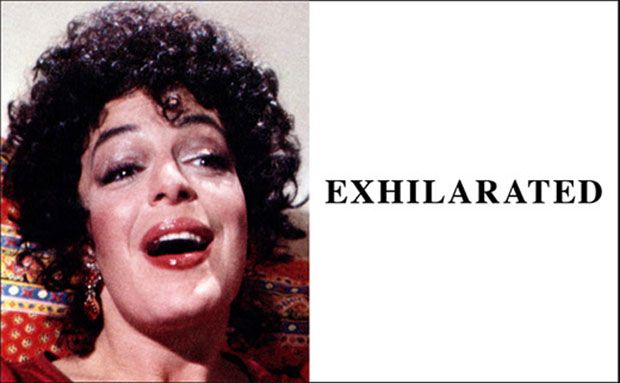
Prima Facie (Second State): Exhilarated
The series Prima Facie, from the Latin 'at first sight', places a photographic portrait alongside a phrase. At first glance, the phrase appears to explain the emotional content of the image, but the appearance of emotion may conflict with reality. While the photograph may suggest several different emotions, the association of 'EXHILARATED' changes the way the viewer perceives the image. The relationship between image and language examines the complexities between the two forms of expression.
Oil on canvas. © John Baldessari

Noses and Ears, Etc.: The Gemini Series: Profile with Ear and Nose (Color)
In this piece Baldessari exposes an isolated nose and ear on a facial profile in silhouette. He views anatomical elements as singular organs, rather than organs that relate to the whole of a face or body. Context has been omitted, leaving only two sensory organs in black and blue space, and leaving the viewer to invent their own narrative to explain them. Perhaps we are prompted to associate an emotion with a color, or to think that the organs suggest facets of the figure's character. Either way, we are led to realize how many of our own assumptions we bring to the reading of images. It is an important insight that has implications for the way we look at all kinds of images. It reminds us of how we respond to cues in advertising, and of how all manner of connotations hover uncertainly around certain motifs. It also leads us to ask what great art consists of: is it a matter of vision and inspiration, or simply the skillful manipulation of codes.
Screen print on paper mounted on Sintra with hand painting. © John Baldessari - National Gallery of Australia, Canberra
Biography of John Baldessari
Childhood
Born in 1931 in National City, California, John Baldessari grew up in relative isolation during the Great Depression. His mother, a Lutheran of Danish descent, was a nurse, and his father was a Catholic from the Dolomites in what is now Italy. His father's entrepreneurial attitude to supporting his family likely had a profound impact on Baldessari's decision to become an artist. His father worked in various trades, from crop-picking to building, and he would recycle and reuse everything from old faucets to cigarettes, cultivating and repurposing as many objects as he could to make money. From a young age, Baldessari would assemble and dismantle his father's materials, questioning why one object was chosen over another.
Early Training
In 1949, Baldessari entered San Diego State College, where he studied art education at the encouragement of his sister. Following this, he decided to turn his attention to art history, so he went to study at the University of California, Berkeley. Baldessari developed an interest for more contemporary art, as opposed to the heavily weighted Renaissance coursework offered at Berkeley. He ultimately chose to return to San Diego State College where he obtained an MA in painting in 1957.
After an instructor at San Diego had taken ill, Baldessari was encouraged to serve as a replacement for one term. He proved to be an excellent mentor and went on to teach high school classes in life drawing and lettering. Here, he worked in relative isolation from the Los Angeles art scene, experimenting with new concepts and approaches without the fear of rejection. As evident in Art Lesson (1964), his early painted works often satirized traditional rules featured in art instruction manuals, such as how to create a proper composition and perfect perspective. In 1970, Baldessari incinerated all of his paintings prior to 1966 for a new piece titled 'The Cremation Project', where he baked the ashes into cookies and placed them in an urn. This conceptual work relates to the continuous cycle of life, everything is created, destroyed, and renewed.
Mature Period
Baldessari's approach was radical, mocking the absurdity of art making, and this encouraged him to abandon the hand-painted quality of his paintings and adopt elements of found text and photography. He exploited appropriated text and photographs from newspapers and magazines in his work, believing that people are able to relate to words and images that are familiar. His first breakthrough works featured only text, as exemplified in Tips For Artists Who Want To Sell (1966-68), where he sardonically explains the "necessary" formal elements for a painting to sell.
Baldessari often employed local sign painters to complete the lettering, pointing them to remove the handcrafted quality entirely. In 1970 he took the concept of 'pointing' to a new level with his Commissioned Paintings series. In this he commissioned amateur artists to complete the painting, adding the caption "A painting by..." to each work. This body of work questioned the notion of artistic authorship, a highly criticized topic concerning conceptual art. During this time, Baldessari created several video pieces, such as I Am Making Art (1971) and Baldessari Sings LeWitt (1972), where he makes humorous commentary on the decisions of the creative process as seen in contemporary conceptual art.
Late Period
In the 1970s, Baldessari took a more 'artless' approach to image making by appropriating stills from B-movies to create synthesized photomontages. The photographs were cheap and easy to acquire, allowing him to systematically juxtapose various images to create a new narrative context. Influenced by early Hollywood cinema, the work suggested movement, similar to a storyboard grid, allowing him to document actions rather than monumentalizing his subject matter.
As seen in Frames and Ribbon (1988), he incorporated stickers to conceal individual faces, thus veiling emotional content and drawing attention to minor details and the negative space between frames. The pricing stickers serve as a minimalist painting technique, creating a new depth within a flat field of color, breaking up the realistic black and white photo content.
Baldessari continued to examine parts of the body through the series Noses and Ears (2006-2007) and Arms and Legs (2007-2008). Both series expose isolated features on a minimal field of color, allowing the viewer to interpret the work through sensual precepts. Baldessari viewed his own features as separate entities, rather than belonging to a whole face or body.
Working in nearly every artistic media, including painting, collage, printmaking, performance art, and video, Baldessari exhibits his work around the world, including his first major U.S. retrospective at the Metropolitan Museum of Art in October 2010. Today, he continues to live and work in Santa Monica, California.
The Legacy of John Baldessari
John Baldessari has been an important influence on a generation of younger artists whose interests combine Conceptual art and Pop. He has also demonstrated how humor can be combined with more serious investigations into language and photography. He has inspired artists such as Richard Prince, Mike Kelley and David Salle to push artistic boundaries while teaching at CalArts (1970-1988) and the University of California at Los Angeles (1996-2007).
Influences and Connections

-
![Richard Prince]() Richard Prince
Richard Prince -
![David Salle]() David Salle
David Salle -
![Jack Goldstein]() Jack Goldstein
Jack Goldstein ![James Welling]() James Welling
James Welling![Troy Brauntuch]() Troy Brauntuch
Troy Brauntuch
Useful Resources on John Baldessari
- John Baldessari: Pure BeautyOur PickBy Jessica Morgan, Leslie Jones
- John Baldessari: A Catalogue Raisonne of Prints and Multiples 1971-2007By Sharon Coplan Hurowitz, Wendy Weitman
- John Baldessari: A Print Retrospective from the Collections of Jordan D. Schnitzer and his Family FoundationBy Hunter Drohojowska-Philip, John Baldessari
- John Baldessari: National CityBy Hugh Davies, Anne Rorimer, John Baldessari
- Conceptual Art: A Critical AnthologyBy Alexander Alberro, Blake Stimson
 Ask The Art Story AI
Ask The Art Story AI